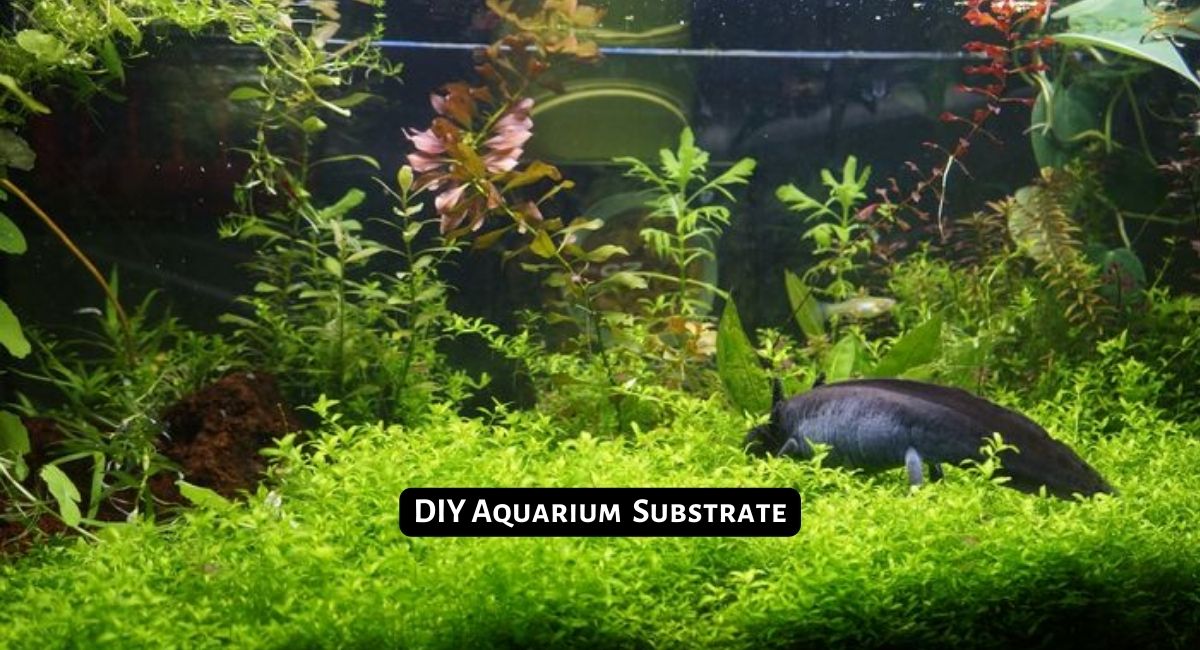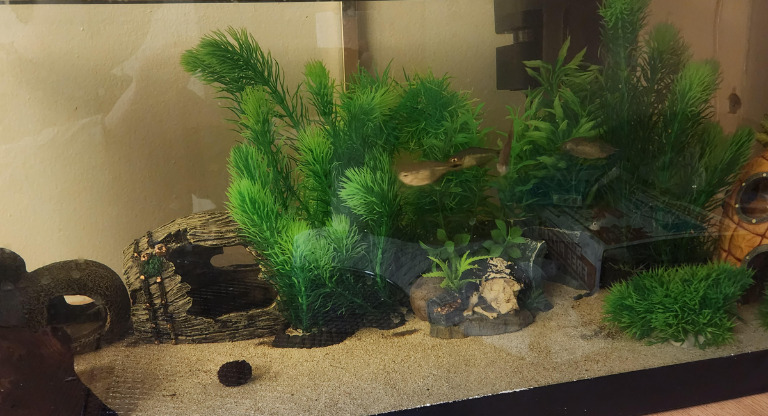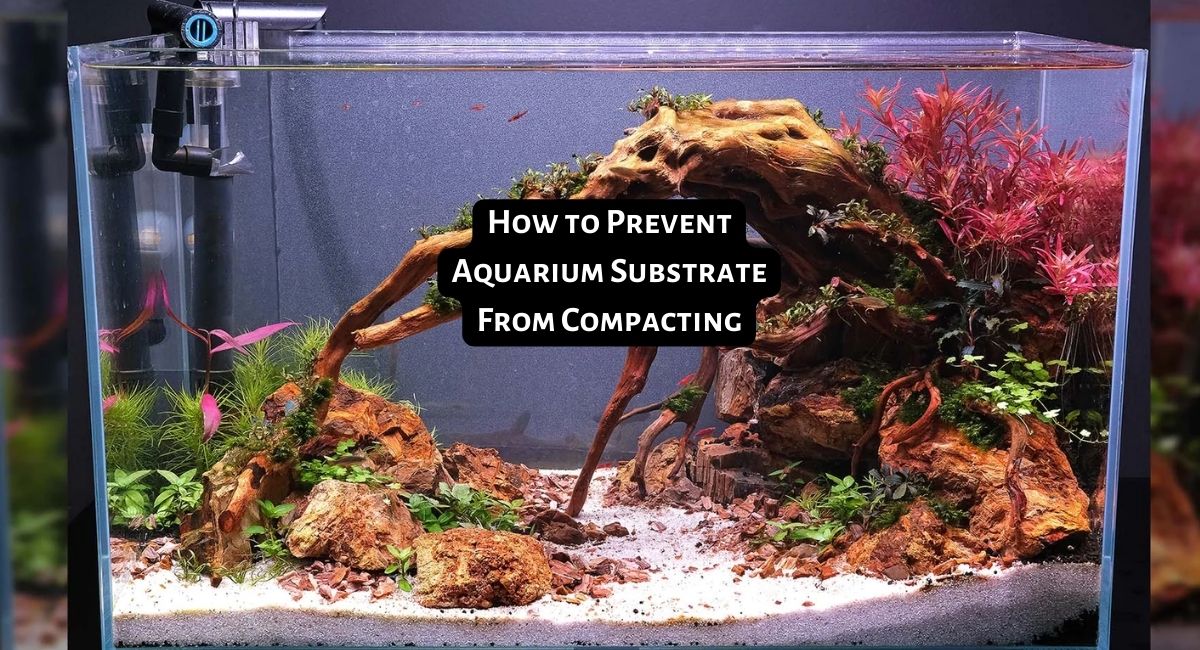Smartplantedaquarium.com participates in affiliate marketing programs. We may earn commissions on purchases made through our affiliate links. This doesn't affect our content or recommendations and we only recommend products we would put in our own tanks.
Creating a thriving aquatic ecosystem within your aquarium begins with the foundation of the substrate. Aquarium soil, a nutrient-rich substrate, forms the basis for healthy plant growth and supports a balanced environment for aquatic life. Making your own aquarium soil at home provides the opportunity to tailor its composition to suit the specific needs of your plants and inhabitants.
In this guide, we will delve into the art of producing aquarium soil, exploring various recipes, ingredients, and steps to help you achieve a flourishing underwater paradise right within your tank. Whether you’re a seasoned aquarist or just starting out, learning how to make aquarium soil at home from scratch opens doors to a captivating world of aquatic cultivation and harmony.
Contents
Key Takeaways
- Creating a thriving aquatic ecosystem starts with a nutrient-rich substrate, or aquarium soil.
- You can make aquarium soil at home by choosing the base material, preparing it, incorporating supplements, layering the soil, wetting it, adding water, and cycling and testing the aquarium.
- Considerations when making aquarium soil include using safe and non-toxic materials, selecting the right particle size, striking a nutrient balance, assessing cation exchange capacity, and allowing for mineralization.
- Some popular aquarium soil recipes include the Walstad method soil, mineralized soil, high-nutrient blend, and simplified Aquasoil mix.
- These recipes can be adjusted based on the specific needs of your plants and setup.
- It’s important to prioritize safety, test water parameters, and observe plant growth to ensure a healthy aquatic environment.
- Homemade aquarium soil can be a cost-effective and rewarding option for aquarium enthusiasts.
Can You Make Aquarium Soil at Home
Yes, it is possible to make aquarium soil at home. However, there are some considerations to keep in mind:
Ingredients: A well-crafted aquarium soil recipe includes essential ingredients that contribute to a thriving aquatic environment. Incorporating organic components such as peat, worm castings, or leaf litter infuses the substrate with vital nutrients. Meanwhile, the inclusion of inorganic elements like clay, sand, or volcanic soil ensures structural integrity. Prioritizing safe and non-toxic materials is imperative.
Particle size: Equally significant is the particle size selection, encompassing a spectrum from fine particles to small pebbles. This choice facilitates water circulation while furnishing ample surface area for beneficial bacteria colonization.
Nutrient balance: Striking a nutrient balance is pivotal; judicious use of fertilizers is advised to avert excess nutrients that can fuel undesirable algae growth. Instead, emphasis should be placed on incorporating trace elements that are essential for plant health.
Cation exchange capacity: The Cation Exchange Capacity (CEC) conferred by clay and organic matter is a cornerstone for nutrient retention, nurturing plant roots. It is advisable to assess the homemade soil’s CEC through testing prior to application.
Mineralization: Factor in the soil’s mineralization process, wherein nutrients are gradually released over time. Allowing a curing period of 2-4 weeks before introducing the soil into the aquarium permits this mineralization to take place effectively.
Safety: Safety is non-negotiable. Eschew garden soil due to potential contamination by parasites, insects, or chemical residues. Opt instead for new or sterilized ingredients to ensure a pristine and secure substrate for your aquatic ecosystem.
How to Make Aquarium Soil at Home
Making aquarium soil at home (DIY aquarium soil) can be a rewarding process, and it can save you money. Here’s a basic guide to making aquarium soil suitable for planted tanks:
Step 1 – Choosing the Base Material
The first step in creating aquarium soil is selecting the appropriate base material. The choice largely depends on the type of plants you plan to grow and the water conditions they prefer:
- Laterite: This is a type of clay rich in iron and aluminum. It’s red or brown in color and is a popular choice for aquariums because of its high iron content, which plants need for photosynthesis. When using laterite, ensure it’s in its pure form, devoid of any additives or fertilizers.
- Peat: This is an accumulation of partially decayed organic matter. Peat is beneficial for softening the water and reducing its pH, which is ideal for certain aquatic plants and fish species. However, it can be a bit messy, so it’s often combined with other materials to minimize its tendency to cloud the water.
- Potting Soil: This is often used as the primary component of aquarium soil. It’s vital to choose organic potting soil free from chemicals, pesticides, and artificial fertilizers, as these can be harmful to fish and plants.
Step 2 – Preparing the Base Material
After selecting your base material, the next step is its preparation:
- Laterite: This doesn’t require any special preparation. You can use it directly at the bottom layer of your aquarium.
- Peat: Before adding it to the aquarium, rinse it thoroughly to remove any fine particles or debris that might cloud the water.
- Potting Soil: Sterilization is crucial to eliminate any harmful pathogens. To do this, spread the soil evenly on a baking tray and bake it in an oven at 200°F (about 90°C) for 30 minutes.
Step 3 – Incorporating Supplements
To make the soil richer and more conducive for plant growth, consider adding the following supplements:
- Clay: This helps in binding the soil particles together and is a good source of iron for plants.
- Vermiculite: This mineral improves the soil’s aeration and water retention capabilities. It also aids in the slow release of nutrients.
- Sand: A layer of sand prevents the underlying soil from getting compacted, ensuring better root growth for plants.
Step 4 – Layering the Soil
Layering is a crucial step in ensuring the stability and efficacy of your aquarium soil. Start with a 1-inch layer of laterite or a mix of laterite and peat. This forms the foundation for your soil. Over the foundation, add a 1 to 2-inch layer of your sterilized potting soil. Finally, if you opt to use sand, spread a 1-inch layer on top. This not only gives a neat finish but also prevents the soil beneath from getting disturbed by water movement or fish.
Step 5 – Wetting the Soil
Before you introduce a large quantity of water to your aquarium, it’s a good idea to mist the soil layers. This ensures the soil settles properly and doesn’t float when you fill the tank.
Step 6 – Adding Water
When you’re ready to add water, do so gently. Pouring water directly can disturb the soil layers. Instead, pour the water over a plate or bowl placed in the aquarium to disperse the flow. Fill the tank gradually to ensure the layers remain undisturbed.
Step 7 – Cycling and Testing the Aquarium
Before introducing fish, it’s essential to let the tank cycle for several weeks. This process allows the establishment of beneficial bacteria and stabilizes water parameters. During this period, test the water frequently to check for ammonia, nitrite, nitrate, and pH levels. This ensures the environment is safe for both fish and plants.
Best Aquarium Soil Recipes
While there are several effective aqua soil recipes, the “best” recipe can vary depending on your specific needs, the plants you intend to grow, and your personal preferences. However, here are a couple of well-regarded and popular aquarium soil recipes that have been successful for many aquarists:
The Walstad Method Soil
The Walstad Method, often referred to as the “Natural Planted Tank Method,” is an approach to setting up and maintaining a planted aquarium that aims to mimic natural ecosystems. One of the key components of the Walstad Method is the use of a specific type of soil substrate, often called “Walstad soil.” This substrate is designed to provide a balanced environment for both plants and aquatic life while minimizing the need for added fertilizers and chemical interventions.
Ingredients
- Organic potting soil (free from chemicals and additives)
- Clay (powdered montmorillonite or bentonite clay)
- Sifted fine gravel or sand for the cap layer
Instructions
- Mix organic potting soil and powdered clay in a container.
- Aim for a ratio of about 1 part clay to 5-6 parts soil.
- Spread the soil and clay mixture evenly in the aquarium.
- Create a base layer, around 1.5 to 2 inches thick.
- Add a cap layer of sifted fine gravel or sand to prevent cloudiness.
- Plant your aquatic plants, ensuring their roots are inserted gently into the substrate layers.
- Slowly fill the aquarium with water, pouring onto a plate to minimize substrate disturbance.
- Monitor water parameters and plant growth as the tank stabilizes.
Mineralized Soil
Mineralized soil refers to a substrate that has been prepared and enriched with essential minerals and nutrients to support healthy plant growth in an aquarium or planted tank. This type of substrate is commonly used by aquarists and hobbyists to create a favorable environment for aquatic plants, encouraging lush and vibrant growth while minimizing the need for additional fertilizers.
Ingredients
- Organic potting soil
- Powdered clay
- Topsoil (rich in minerals)
- Sifted fine gravel or sand for the cap layer
Instructions
- Layer the aquarium base with organic potting soil, powdered clay, and mineral-rich topsoil in that order.
- The ratios can vary, but consider around 1 part clay, 4 parts soil, and a similar amount of topsoil.
- Spread the layered mixture evenly in the aquarium, aiming for a thickness of approximately 1.5 to 2 inches.
- Add a cap layer of sifted fine gravel or sand to prevent cloudiness.
- Plant your aquatic plants while being cautious not to disturb the substrate layers.
- Slowly fill the aquarium with water, using a plate to minimize substrate disturbance.
- Monitor water parameters and plant growth as the tank stabilizes.
High-Nutrient Blend
A high-nutrient blend refers to a substrate mixture that is specifically formulated to provide an abundance of essential nutrients for plant growth within an aquarium or planted tank. This type of substrate is designed to support the vigorous growth of aquatic plants by supplying them with the necessary macro and micronutrients required for healthy development.
Ingredients
- Organic potting soil (free from chemicals and additives)
- Powdered clay (montmorillonite or bentonite)
- Worm castings (nutrient-rich organic matter from vermicomposting)
- Crushed aragonite or other mineralized material (for pH buffering and minerals)
- Sifted sand or fine gravel for the cap layer
Instructions
- Sift potting soil to remove debris.
- Create clay slurry, settle, pour off excess water.
- Add worm castings to potting soil.
- Combine clay slurry with potting soil and worm castings.
- Add crushed aragonite for minerals and pH buffering.
- Evenly layer substrate in aquarium, 1.5 to 2 inches thick.
- Apply sifted sand or gravel on top.
- Gently plant aquatic plants, avoiding layer disturbance.
- Slowly add water using a plate to minimize substrate disruption.
- Regularly test water parameters, observe plant growth, and adjust care as needed.
Simplified Aquasoil Mix
A simplified Aquasoil mix refers to a substrate blend designed to replicate the characteristics of popular commercial planted tank substrates like Aquasoil, but in a more straightforward and DIY-friendly manner. Aquasoil is a specialized substrate known for its high nutrient content and ability to support lush plant growth. Creating a simplified version involves using readily available materials to achieve similar benefits without the complexity or cost associated with commercial products.
Ingredients
- Organic potting soil
- Powdered clay
- Sifted sand or fine gravel for cap layer
Instructions
- Sift potting soil to remove debris.
- Create clay slurry, settle, pour off excess water.
- Mix potting soil and clay in a 1:1 ratio.
- Evenly layer the mix in aquarium, 1.5 to 2 inches thick.
- Apply sifted sand or gravel on top to prevent disturbance.
- Gently plant aquatic plants, taking care not to disrupt layers.
- Slowly add water onto a plate to minimize substrate disturbance.
- Regularly test water parameters, observe plant growth, and perform necessary maintenance.
These recipes serve as starting points, and you can adjust the ratios based on the needs of your specific setup. Whether you’re aiming for a lush planted tank using the Walstad method or a nutrient-rich environment with mineralized soil, careful preparation and monitoring will help ensure the success of your aquarium’s ecosystem.
Advantages & Disadvantages of Using Homemade Aquarium Soil
Using homemade aquarium soil offers several advantages and disadvantages, which are important to consider before deciding whether it’s the right choice for your planted aquarium. Here’s a breakdown of both sides:
| Advantages | Disadvantages |
|---|---|
| Cost-Effective: Budget-friendly compared to commercial options. | Risk of Imbalance: Incorrect formulation can lead to nutrient imbalances. |
| Customization: Ability to tailor ingredients and ratios to preferences. | Water Parameters: May impact pH, hardness, and require monitoring. |
| Nutrient Control: Adjust nutrient levels to suit plant needs, potentially reducing fertilization. | Cloudiness: Initial cloudiness due to fine particles when added to the tank. |
| Natural Nutrients: Incorporates organic materials for gradual nutrient release. | Labor-Intensive: Requires time, effort, and careful preparation. |
| Personal Satisfaction: Rewarding and educational experience. | Initial Setup Challenges: May cause temporary ammonia spikes, requiring careful management. |
| Experimentation: Finding the right formula may involve trial and error. |
Conclusion
Mastering the art of creating aquarium soil at home empowers you to take control of your aquatic environment like never before. By understanding the importance of substrate composition and the symbiotic relationship between plants and aquatic life, you’ve embarked on a journey to cultivate a captivating underwater world.
Through careful selection of ingredients, meticulous preparation, and a touch of creativity, you can craft a substrate that caters to the unique requirements of your plants and inhabitants. Remember that the journey doesn’t end here – continuous monitoring, maintenance, and adjustments will be necessary to ensure the long-term health of your aquarium ecosystem.
As you watch your plants flourish, your fish thrive, and your aquatic landscape come to life, the satisfaction of knowing you’ve played a pivotal role in nurturing this captivating microcosm will be immeasurable. So dive in, experiment, and enjoy the rewarding experience of nurturing your very own aquatic masterpiece.
Frequently Asked Questions
1. Do aquarium plants need special soil?
Yes, aquarium plants often require special soil, known as aquarium soil or substrate. Unlike terrestrial plants, aquatic plants extract nutrients primarily through their roots. Aquarium soil is designed to provide essential nutrients, support healthy root growth, and maintain proper pH levels in the aquatic environment. Using specialized substrate ensures optimal conditions for plant growth and overall ecosystem health within your aquarium.
2. What are the ingredients in aquarium soil?
Common ingredients in aquarium soil include organic potting soil, clay, peat moss, and mineral supplements. Organic potting soil provides nutrients and organic matter, while clay enhances texture and supports root growth. Peat moss contributes to pH regulation and offers beneficial microorganisms. Mineral supplements like volcanic rock or crushed coral help stabilize pH levels and provide trace elements. Some formulations might also include activated carbon, nutrient pellets, or beneficial bacteria cultures to further enrich the substrate.
3. What kind of organic soil to use for aquarium?
When choosing organic soil for your aquarium, opt for a high-quality, chemical-free potting soil that does not contain additives like fertilizers or pesticides. Look for a potting mix with minimal peat content, as excessive peat can make the water overly acidic. Check the ingredients label to ensure it includes organic matter and natural components that promote plant growth, such as composted bark and earthworm castings.
4. How thick should aquarium soil be?
The recommended thickness for aquarium soil typically ranges from 2 to 3 inches (5 to 7.5 cm). This depth provides enough space for plant roots to establish and access nutrients while preventing the soil from compacting excessively. Deeper substrates can lead to anaerobic conditions in the lower layers, which might negatively impact plant roots and water quality.
5. How long does aquarium soil last?
On average, aquarium soil can last anywhere from 1 to 3 years before its nutrient content starts to deplete. The lifespan of aquarium soil varies based on factors like the specific brand, the number of plants, and the maintenance routine. To maintain healthy plant growth, consider replacing or refreshing the top layer of soil every 1 to 2 years, or as you observe diminished plant vitality.






